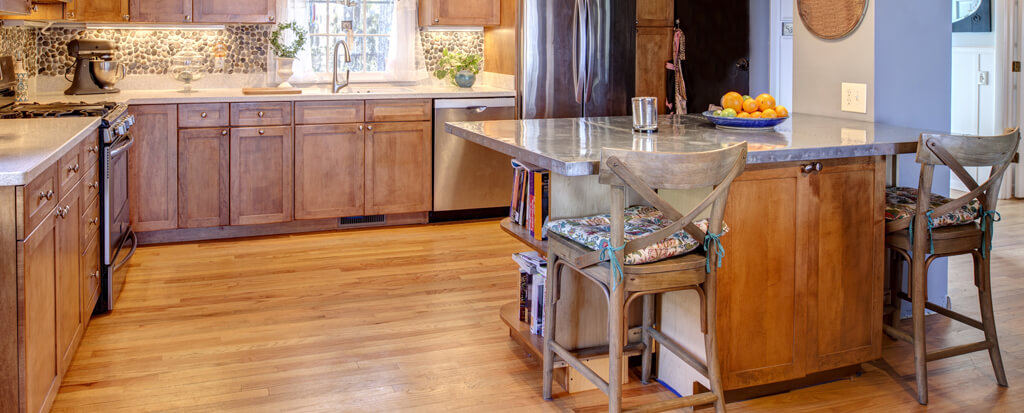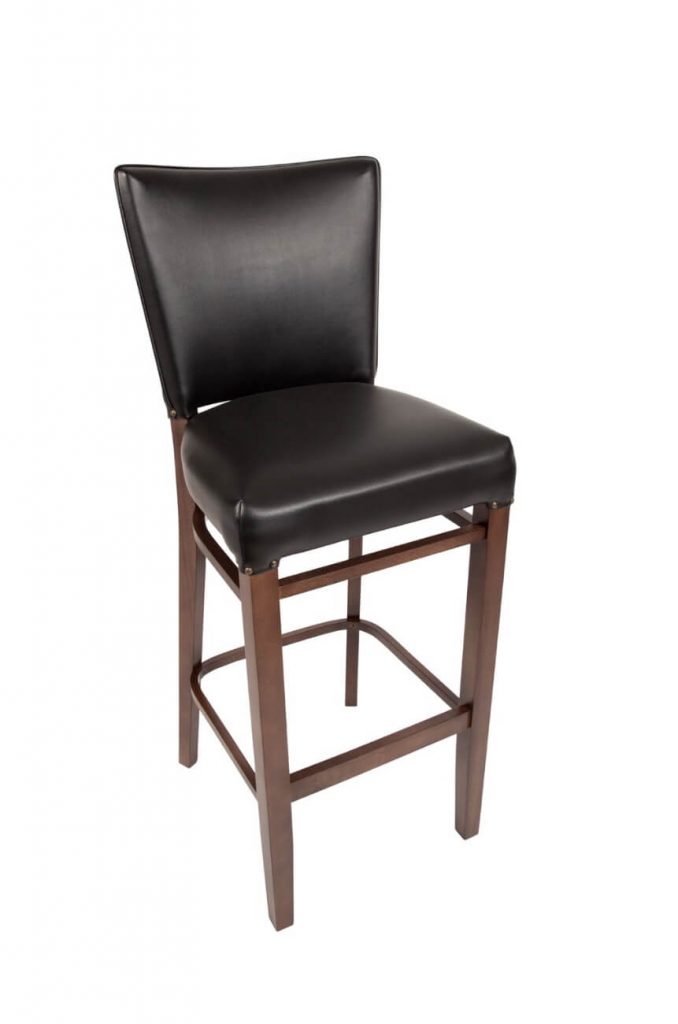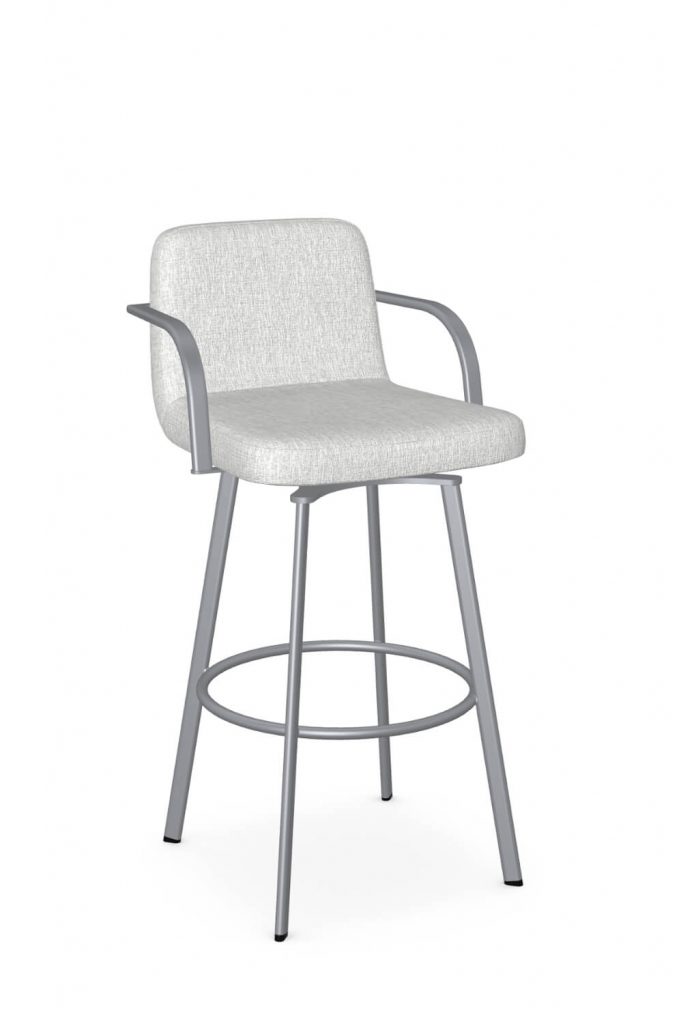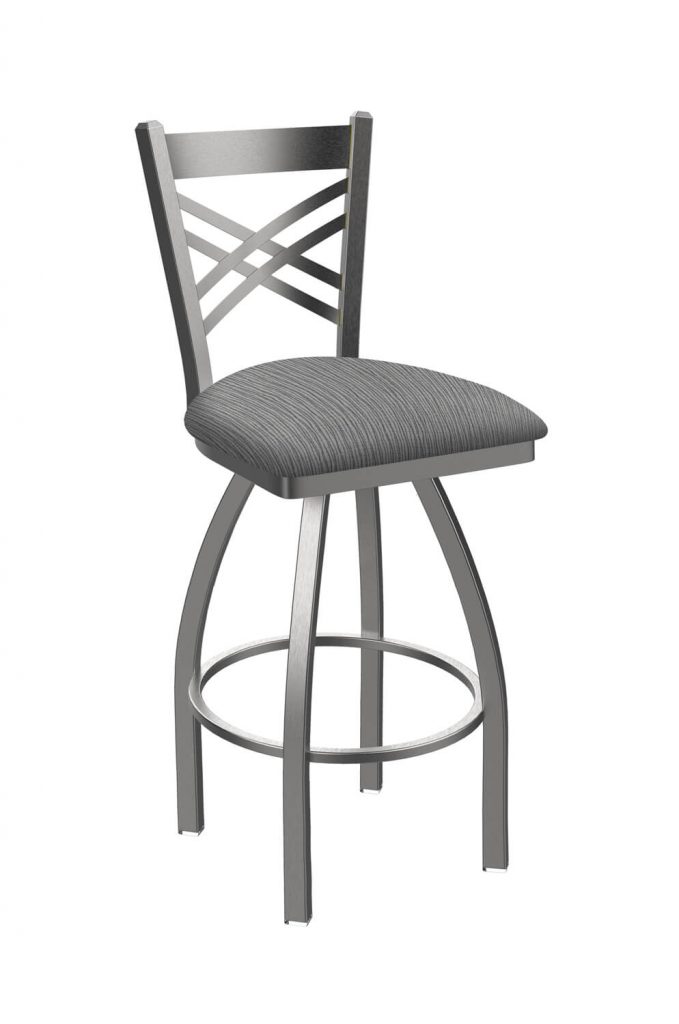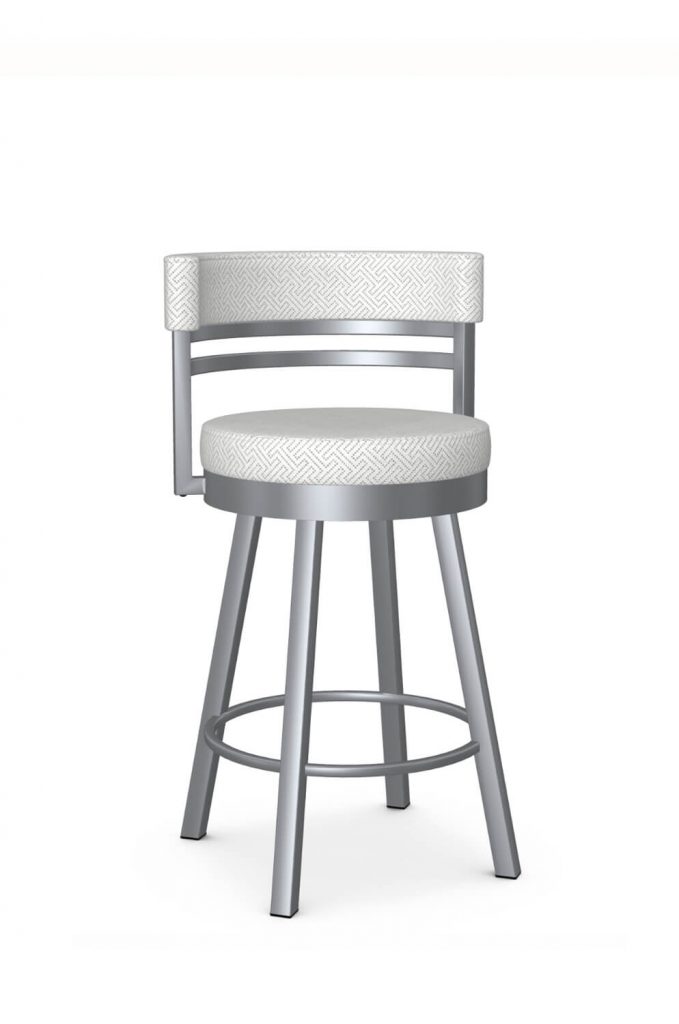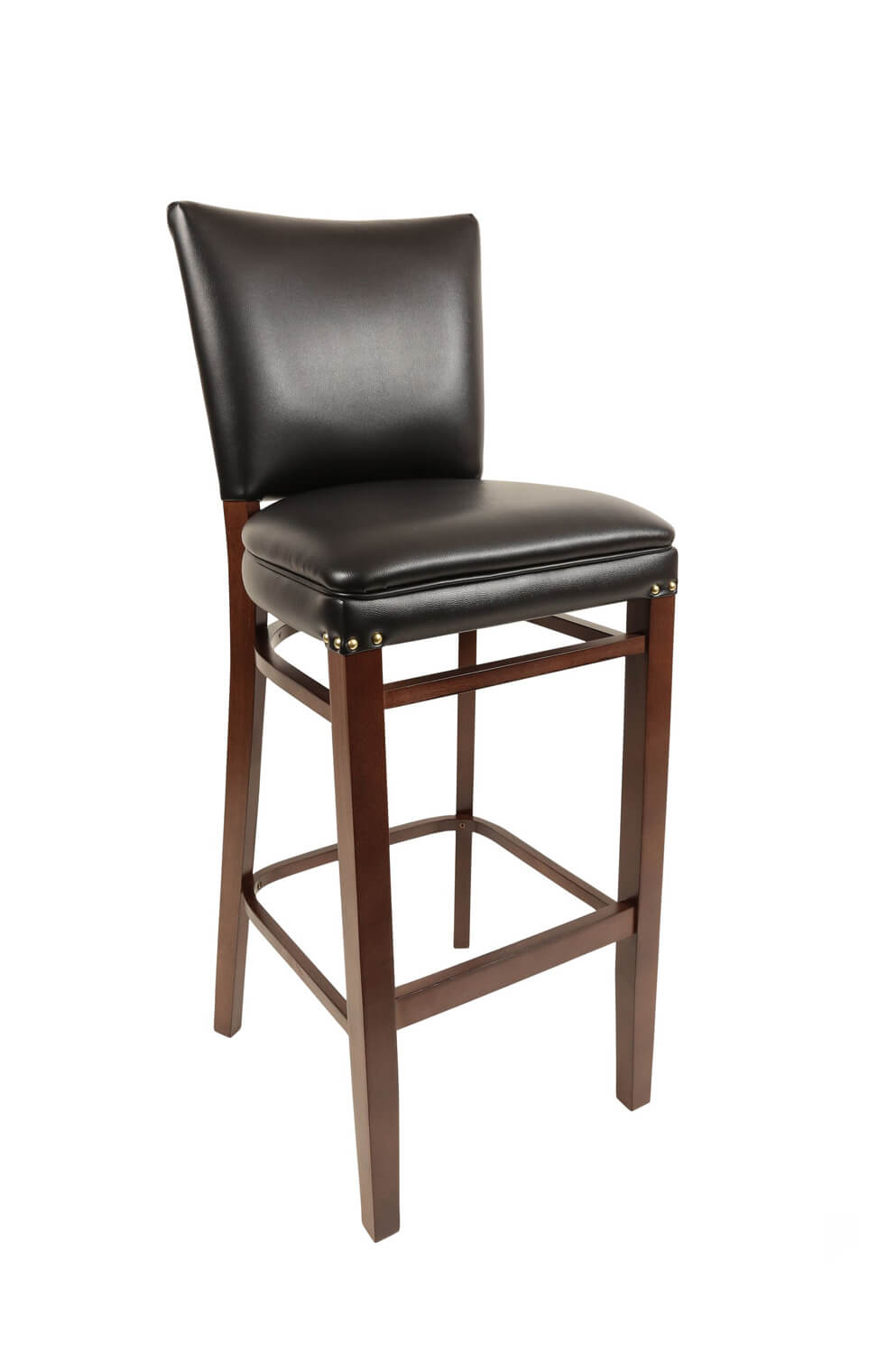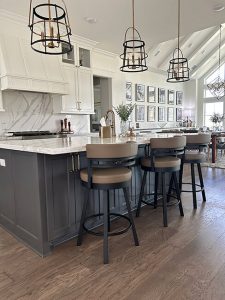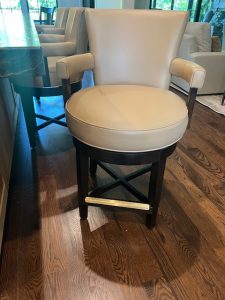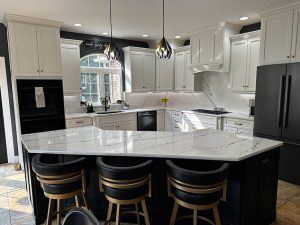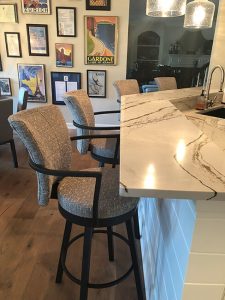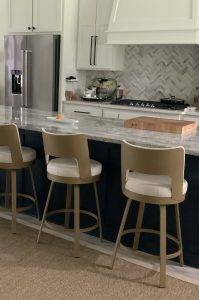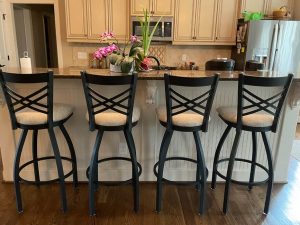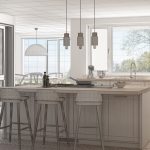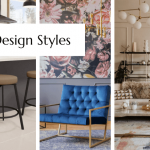This article was updated on July 8 2025
The Importance of Keeping Bar Stools Updated
Over time, bar stools can show signs of wear and tear, which can lead to fabric damage or a loss of cushioning, impacting both the look and the comfort level they provide.
Keeping your bar stools updated is essential for ensuring the safety, comfort, and visual appeal of your space.
The Lifespan of a Typical Bar Stool
The average lifespan of bar stools can vary widely depending on several key factors.
Typically, a well-made bar stool could last anywhere from 10 to 20 years, but let’s break down what actually impacts that number.
Materials
First up, materials are a big deal. Stools crafted from robust materials like solid hardwood, high-grade steel, or wrought iron tend to stand the test of time better than those made from plastic or particleboard.
Leather or vinyl upholsteries usually outlast fabrics like cotton or polyester, especially in the spill-prone bar area.

Our bar stools come in a variety of materials:
Usage
Then there’s usage. In a commercial setting with patrons hopping on and off all day, stools will wear out much quicker than those in a home kitchen that see action just during breakfast and the occasional dinner party.
Maintenance
Maintenance is another critical factor. Regular cleaning, immediate spill management, and tightening of any loose screws or bolts can extend the life of your stools significantly. It’s like taking your car in for a service; a little TLC can go a long way.
Design
And don’t forget about design. Bar stools with simpler mechanisms (like non-swivel stools) have less that can go wrong, while those with adjustable heights and other moving parts may need more frequent repairs or replacements.
5 Clear Indicators Your Bar Stools are Due for a Revamp
Is it Time for New Bar Stools? Print Our 5-Point Checklist Below:
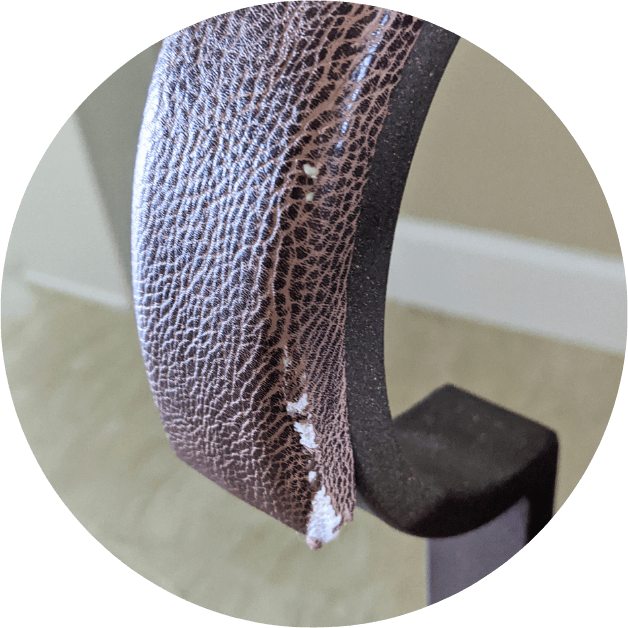
1. Wear and Tear
Over time, even the sturdiest bar stools show their age. Visible damage like cracks in the material, peeling surfaces, frayed fabrics, or colors that have faded under the onslaught of sunlight and spills can turn a chic seat into a shabby afterthought. When the upholstery looks more like a patchwork quilt and the once-glossy finish is all but gone, it’s a clear sign that your bar stools have become worn out furniture and need some love—or a replacement.

2. Wobbly or Unstable Base
It’s all fun and games until someone takes a tumble from a wobbly stool. An unstable base isn’t just annoying; it’s a hazard. Stools should be a safe harbor, not a balancing act. Regularly turn your stools upside down to check for loose screws or weakened joints, and give them a good shake to ensure they can stand up to daily use without sending someone sideways.
Tips on Checking for Stability
- Give It a Shake — Grab the stool by the backrest and the seat, and gently shake it. Any noticeable movement between the legs and the seat indicates loose joints.
- Sit and Shift — Sit on the stool and gently shift your weight from side to side. Pay attention to any tipping or unusual movements that could signal instability.
- Inspect the Legs — Look for any signs of damage or wear on each leg. Uneven legs can cause a stool to wobble.
- Check the Footrest — If the stool has a footrest, make sure it’s securely attached. A loose footrest can compromise the stability of the stool.
- Evaluate the Floor — Sometimes, the problem isn’t with the stool but with an uneven floor. Place the stool in a different spot to see if the issue persists.
- Tighten Up — Regularly tighten all screws and bolts. Over time, these can loosen from use, affecting the stool’s stability.
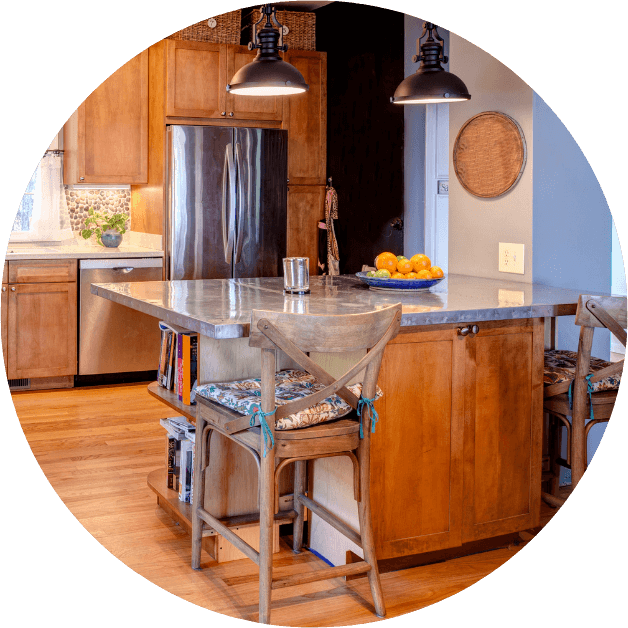
3. Outdated Design
Like bell-bottoms in a skinny-jean world, an outdated stool sticks out. It can clash with your contemporary decor, dragging down the vibe of your space. Staying abreast of design trends helps keep your environment feeling fresh and relevant. Plus, updating your stools can be a simple yet impactful way to give your space a facelift without a full remodel.
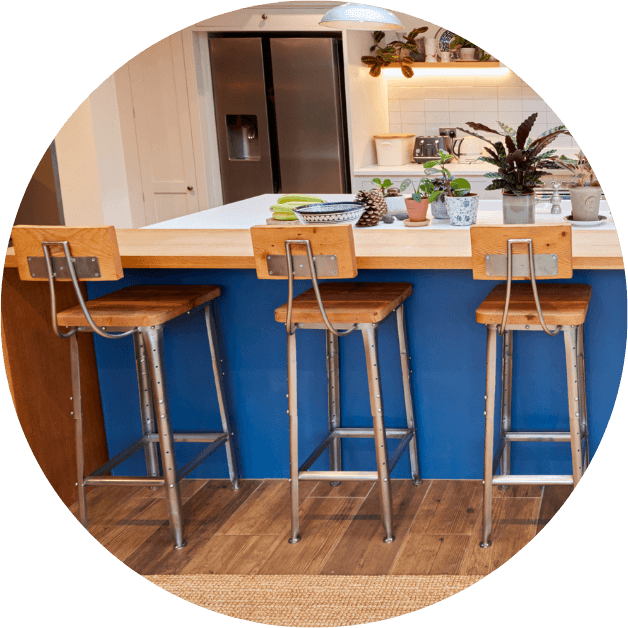
4. Lack of Comfort
If sitting on your stool feels like a workout for your glutes or you hear a symphony of creaks every time you move, it’s time to reconsider your seating. Modern bar stools come with ergonomically designed seats and just the right amount of give, ensuring that guests stay comfortable, whether they’re lingering over breakfast or a nightcap.
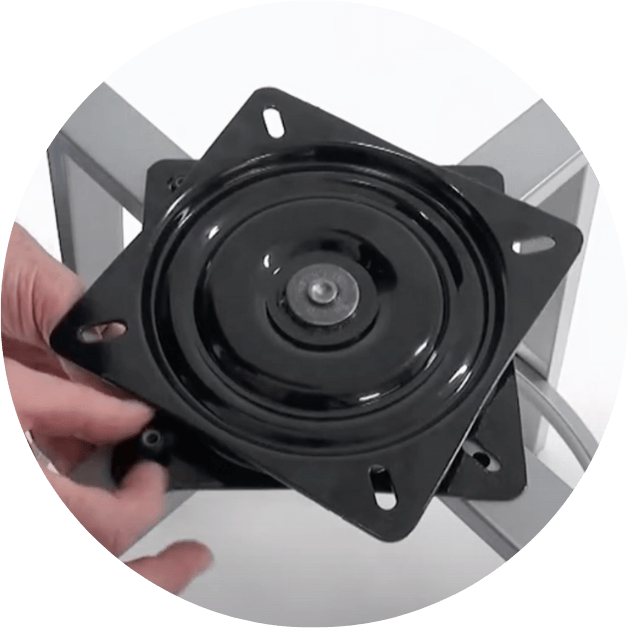
5. Safety Concerns
The footrest isn’t just a place to park your feet; it’s an integral part of the stool’s structure. And if the swivel mechanism sounds like it’s grinding coffee rather than turning smoothly, that’s a red flag. Any non-functioning part on a bar stool not only compromises the integrity of the stool, but also presents a potential for injury. Regular inspections and prompt repairs are key to keeping your seating safe and functional.
Tips on Checking for Stability
- Give It a Shake — Grab the stool by the backrest and the seat, and gently shake it. Any noticeable movement between the legs and the seat indicates loose joints.
- Sit and Shift — Sit on the stool and gently shift your weight from side to side. Pay attention to any tipping or unusual movements that could signal instability.
- Inspect the Legs — Look for any signs of damage or wear on each leg. Uneven legs can cause a stool to wobble.
- Check the Footrest — If the stool has a footrest, make sure it’s securely attached. A loose footrest can compromise the stability of the stool.
- Evaluate the Floor — Sometimes, the problem isn’t with the stool but with an uneven floor. Place the stool in a different spot to see if the issue persists.
- Tighten Up — Regularly tighten all screws and bolts. Over time, these can loosen from use, affecting the stool’s stability.
Is Your Bar Stool Safety at Risk? Download Our Free 5-Point Checklist:
Benefits of Upgrading Your Bar Stools:
- Improved Aesthetics — Swapping out old, worn bar stools for sleek, new ones can instantly refresh the look of your space.
- Enhanced Comfort — Upgrading to ergonomically designed bar stools with ample cushioning and proper support can significantly improve the sitting experience. This is crucial for anyone spending considerable time at a high table or bar, as it can help prevent discomfort and potential back issues.
- Safety Assurance — New bar stools come with the added benefit of up-to-date safety features and sturdy construction, ensuring the well-being of your family and guests.
Finding Long-Lasting Bar Stools
Good news—you’re already in the right place! Here at Barstool Comforts, we’re dedicated to offering sustainable and long-lasting bar stools designed to stand the test of time.
With our carefully curated selection, you’re sure to find the perfect stools that will serve you beautifully for years to come.
Ronny Swivel Stool with Low Back
- 10-year limited residential warranty on metal frame
- Made to last for decades
- Lead-free paint
- Heavy-duty North American steel
- Powder-coated metal finish for heavy-duty use
- Modern and swivel design
Barbara Classic Upholstered Beechwood Bar Stool with Back
- 5-year warranty on wood frame
- Made to last for decades
- Hand-crafted solid European Beechwood
- BIFMA/ANSI (Canada) compliant
- High resilient foam seat with suspension seating
- High-density foam seating – built for lasting comfort
Catalina Swivel Bar Stool #820
- 5-year limited residential warranty
- Made to last for decades
- Heavy-duty commercial-grade steel
- Powder-coated metal finish for heavy-duty use
- Weight limit of 550 lbs
- Transitional and swivel design
Maintenance Tips to Extend the Life of Your New Bar Stools
Here’s how you can extend their life and keep them looking as good as new:
Cleaning Methods
- Wooden Stools: Dust regularly with a soft, dry cloth. For deeper cleans, use a damp cloth with mild soap, but avoid soaking the wood. Dry immediately after cleaning.
- Metal Stools: Wipe down with a damp cloth. You can use a mild detergent for stubborn spots. For chrome finishes, a glass cleaner can help maintain shine.
- Upholstered Stools: Vacuum the seats regularly to remove dust and crumbs. Spot clean stains using a suitable fabric cleaner. For leather, a soft, damp cloth with a bit of mild soap works wonders—just be sure to dry it off well.
- Plastic and Acrylic Stools: Use soapy water and a soft cloth. Avoid abrasive cleaners that can scratch the surface.
Regular Checks and Minor Fixes
- Tighten Screws and Bolts: Every few months, give all the screws and bolts a quick tighten. This simple act can prevent wobbling and keep the stools stable.
- Inspect for Damage: Look for any signs of wear or damage, such as cracks in wood or metal, and address these issues promptly to prevent them from worsening.
- Lubricate Moving Parts: If your stools have swivel mechanisms, a bit of lubricant can keep them turning smoothly.
Proper Usage to Prevent Premature Wear
- Avoid Standing on Stools: Encourage proper use among kids and guests. Standing on stools can stress the structure and lead to damage.
- Use Protective Pads: If your stools are used on hard flooring, consider adding felt pads to the legs to prevent scratches on both the stools and the floor.
- Handle with Care: When moving stools, lift rather than drag them to avoid damaging the legs and the floor.
The Importance of Modern, Safe, and Comfortable Bar Stools
By choosing to update your stools, you’re not only refreshing the look of your home or commercial setting, but also investing in the well-being of everyone who uses them.
This proactive approach to maintaining your furniture ensures that your space remains both stylish and secure, offering peace of mind alongside aesthetic appeal.
FAQs
The frequency at which you should update furniture largely depends on various factors such as the quality of the furniture, its daily wear and tear, evolving personal tastes, and changes in lifestyle or living situations. High-quality furniture can last many years, even decades, if properly cared for, meaning updates might only be necessary to reflect changes in personal style or to add functionality for life’s transitions, like moving to a new home or welcoming a child. On the other hand, more affordable or heavily used pieces might show signs of wear or go out of style more quickly, necessitating updates every few years. Essentially, while there’s no one-size-fits-all answer, paying attention to the condition of your furniture and how well it meets your current needs and tastes can guide your decision on when to update.
The lifespan of furniture varies significantly based on its type, quality, and usage. High-quality hardwood pieces like sofas, dining tables, and bed frames can last 10 to 15 years or more, often becoming heirloom items that are passed down through generations. Mid-range furniture, on the other hand, typically has a lifespan of 5 to 10 years, depending on the care it receives and the frequency of use. Items made from less durable materials or that are subject to heavy daily use may need replacing every 2 to 5 years. Upholstered items such as couches and armchairs can last anywhere from 7 to 15 years, with their longevity influenced by the fabric’s durability and the structure’s quality. Regular maintenance, such as cleaning, tightening loose screws, and avoiding excessive sunlight or moisture, can significantly extend the life of most furniture pieces.
Ready to Upgrade?
Explore how our custom-made stools enhance real kitchens:

